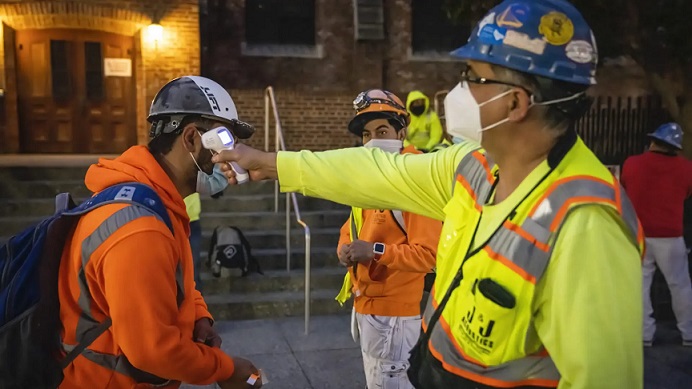Construction safety refers to the proactive measures and protocols implemented to prevent accidents, injuries and fatalities on construction sites. Ensuring a safe working environment is not just a legal requirement but is essential for the well-being of workers, the reputation of the company and the success of construction projects. This blog will help readers understand why construction safety is critical and relevant training courses that improve it.
What is Construction Safety?
Construction safety is the practice of minimising risks and ensuring a secure work environment within construction sites. It involves implementing measures to prevent accidents, injuries and property damage. This includes safety protocols, proper use of personal protective equipment (PPE) and regular inspections of equipment and worksites.
Why is it Important to Improve Construction Safety?
Improving construction safety is crucial for several reasons. The construction industry is inherently risky and workers need protection from a wide range of health and safety hazards. A strong safety record also enhances the company’s reputation, fostering trust among clients and stakeholders. Finally, improved safety measures can increase productivity, as a safe work environment promotes focus and efficiency.
Measures to Improve Safety in Your Construction Company
Conduct Risk Assessments
Start by conducting a thorough risk assessment of your construction site. Identify potential hazards, assess their severity and prioritise them based on the level of risk. Risk assessments are the foundation of your safety measures.
Use of Personal Protective Equipment (PPE)
PPE serves as a crucial line of defence against various construction site hazards. Ensure all workers are provided with the necessary PPE and adequately trained to use it. Examples include hard hats, gloves, safety glasses and steel-toed boots.
Regular Equipment Inspection and Maintenance
Malfunctioning equipment poses a significant threat to workers, so implementing routine checks and repairs is vital for accident prevention.
Implement Safety Policies and Procedures
Establish clear and comprehensive safety policies and procedures and communicate them to all employees. Regularly review and update these policies to adapt to changing conditions and industry best practices.
Training Programmes That Can Help Improve Construction Safety
CDM (Construction, Design, and Management) Training:
CDM training focuses on risk management and the legal responsibilities of all parties involved in construction projects. It ensures an understanding of regulations to enhance safety, coordination and compliance during the project lifecycle.
Health and Safety in Construction:
Health and safety training in construction covers general safety protocols, hazard identification and risk mitigation strategies. It aims to create a safety-conscious culture among construction workers to reduce accidents and injuries.
Manual Handling in Construction:
Manual handling training addresses the proper techniques for lifting, carrying and moving objects to prevent musculoskeletal injuries. Construction workers learn safe practices to minimise the physical strain associated with manual tasks.
Working at Height in Construction:
Working at height training equips workers with the skills and knowledge needed to stay safe when there is a risk of falling. This includes properly using fall protection equipment, understanding potential risks and implementing preventive measures to ensure safety.
Lone Worker Training:
Lone worker training focuses on the unique safety challenges faced by individuals working alone. It covers risk assessment, communication protocols and emergency response strategies to safeguard lone workers.
Conclusion
Prioritising safety in construction is not just a legal obligation but a moral imperative. By implementing comprehensive safety measures, establishing a robust safety plan and investing in training programmes, construction companies can create a work environment that protects their most valuable asset – their workforce.
The benefits extend beyond legal compliance, fostering a positive reputation, increased productivity and, most importantly, the well-being of those who contribute to the growth of the construction industry.
